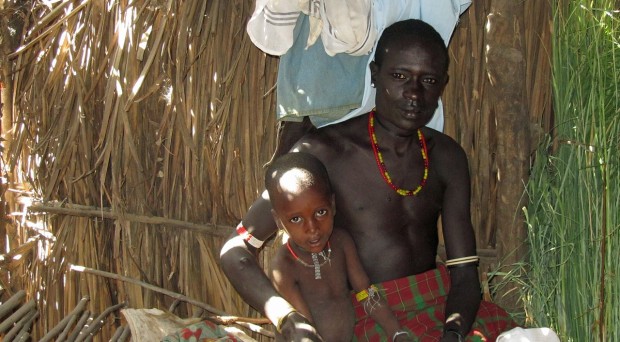
What happens when a mother dies? In the West, the most ready and obvious answer is grief – the harrowing emotional and psychological toll of losing a loved one. A mother’s death is largely viewed as a private tragedy that will grow more manageable in time.
But in many developing countries, a mother’s death is much more than an emotional crisis, often leading to long-term social and economic breakdown, both for her immediate family and the wider community. This topic is explored in new depth, in a special issue launched today in Reproductive Health (an open-access journal).
“The True Cost of Maternal Death: Individual Tragedy Impacts Family, Community and Nations” focuses exclusively on the immediate and longer-term effects of maternal death on surviving children, households, and communities. It features seven studies, with data drawn from four African countries – Ethiopia, Kenya, Malawi, and South Africa.
The research was conducted by two research groups, one led by Harvard’s FXB Center for Health and Human Rights, and the other a consortium made up of Family Care International, the International Center for Research on Women, and the Kenya Medical Research Institute (KEMRI)-CDC Research and Public Health Collaboration. The results provide hard evidence that a mother’s loss can devastate the livelihoods, quality of life, and survival chances of those she leaves behind.
Long-term consequences
When a mother dies or is disabled from causes related to pregnancy and childbirth, the consequences are interlinked, intergenerational, and extensive.
Financial instability was one of the key issues identified. Mothers are not only caregivers at home, but contribute substantially to household income. The loss of that income can severely undermine a family’s ability to access basic necessities, such as food, shelter and health care. Funeral costs alone can ruin a household’s economy.
For many girls, the only viable options that remained were early marriage and early motherhood.
In addition, loss of education was also a problem, with older surviving children more likely to leave school. For many girls, the only viable options that remained were early marriage and early motherhood. Both school dropout and early marriage tend to renew the cycle of poverty for the next generation.
There was also increased mortality among children whose mothers had died. The research found that newborns whose mothers die in childbirth are far less likely to reach their first birthday than those whose mothers do not die, or who die from other causes. Early marriage was linked to higher maternal mortality and therefore to increased infant and newborn mortality.
Finally, difficulty managing the household was also identified as a key ripple effect of maternal death. Fathers and surviving children are often hard-pressed to take on the myriad tasks performed by one woman. To ease the burden of care, children may be sent away to live with other families and this separation can further damage family integrity.
The studies in the new issue point to crucial gaps in existing health policies and systems, but also suggest a need to overturn traditional beliefs about the value and efficacy of women.
Looking to the future
Along with providing suggestions to inform the work of donors, policymakers and policy implementers, each study underscores the fact that the continued marginalization of women – in particular, poor women, religious and ethnic minorities, and disabled women – is neither consistent with human rights principles nor conducive to overall intersectoral collaboration.
As the Millennium Development Goals draw to a close and the formulation of the Sustainable Development Goals gets underway, it is increasingly clear that vigorous attention to maternal, newborn and child health must be central to the development planning agenda.
Health and policy stakeholders, along with communities themselves, must understand that maternal mortality is a health issue, a human rights issue, and a social justice issue.
Related resources:
- “Women’s Lives Matter: The Impact of Maternal Death on Families and Communities” (video)
- Costs of Inaction on Maternal Mortality: Qualitative Evidence of the Impacts of Maternal Deaths on Living Children in Tanzania
- A Price Too High to Bear: The Costs of Maternal Mortality to Families and Communities
- The True Cost of A Mother’s Death: Calculating the Toll on Children
2 Comments